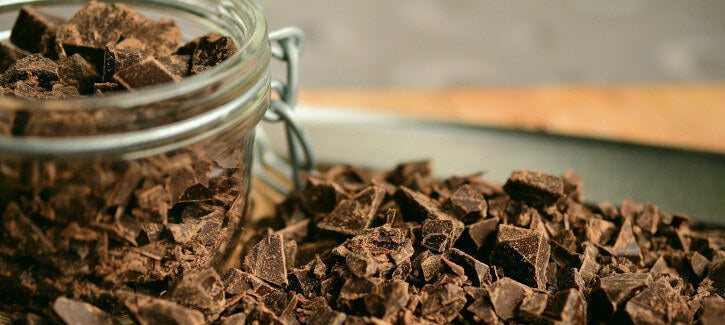Differences between dark and dark chocolate
A varied and healthy daily diet doesn't have to mean forgoing small pleasures. Delicious sweets should also be on the menu. One of these products will certainly be high-quality chocolate, which satisfies the desire for snacks throughout the day and can also be used as a dessert or as a coffee supplement. However, it's important to consciously choose products rich in valuable cocoa when shopping.
Every chocolate fan knows that you can find it in many varieties on the market – bitter, dessert, milk, white, and, for the past few years, pink (made from ruby-red cocoa beans). What's the best choice when you want something sweet?
Milk chocolate typically contains less than 25% cocoa solids and, as the name suggests, is enriched with milk. Dark chocolate, on the other hand, should contain at least 70% cocoa solids (cocoa mass, rich in valuable fats). A compromise between these contrasting flavors is dessert chocolate—more delicate in flavor and texture than dark chocolate, yet drier and less sweet than milk chocolate.
Dessert chocolate and its main uses
According to the standard, dark chocolate should contain 30 to 70% cocoa solids. Depending on the chosen dish, it is suitable both as a sweet snack and for preparing cakes, desserts, and various dishes (e.g., Mexican moth-inspired sauces).
Good natural chocolate should contain:
- Cocoa mass in a quantity of at least 50%,
- Cocoa butter (also called cacao butter), rich in palmitic, stearic, oleic and linoleic acids.
Due to its high price, cocoa butter is often replaced with other fats and soy lecithin, which are intended to imitate the velvety texture of melting chocolate. It's also worth choosing products with a lower sugar content or healthier sugar substitutes such as xylitol or cane sugar. The darker the chocolate, the more cocoa is added, thus providing the body with magnesium and other valuable nutrients in addition to calories. One of the widely appreciated effects of chocolate is its stimulation of serotonin production. Cocoa contains caffeine, theobromine, theophylline, and anandamide. Science can therefore directly confirm that eating chocolate does indeed improve mood.
High-quality dark chocolate and semi-sweet chocolate are prized for their beneficial effects on the body. Be careful, however—as you might expect, excessive consumption of chocolate can lead to weight gain. At the same time, however, we're increasingly hearing about the positive effects of the substances contained in cocoa on the circulatory system, particularly on strengthening blood vessel walls. Interestingly, pure cocoa also has anti-cavity properties. Unfortunately, this effect is negated by the large amount of sugar found in mass-produced chocolates.
It's a good idea to choose cocoa-rich products, as its positive effect on strengthening the immune system. For example, high-quality dessert chocolate with spices (like cinnamon or sea salt) can not only help combat seasonal weaknesses but also provide the body with additional nutrients through additives. Chocolate with chili, pepper, or ginger will gently warm you up, while the addition of nuts or almonds provides an additional boost of valuable minerals and vitamins.
THE PUBLISHER'S CHOICE
Almonds 1 kg BIOGO
- €11,69
€13,75- €11,69
- Unit price
- / per
Walnuts 800 g BIOGO
- €8,65
€10,18- €8,65
- Unit price
- / per
Dried organic mango 400 g BIOGO
- €10,99
- €10,99
- Unit price
- / per
Dried White Mulberries 500 g ORGANIC
- €5,84
€6,87- €5,84
- Unit price
- / per
Dried organic figs 800 g BIOGO
- €30,12
- €30,12
- Unit price
- / per
Unpeeled buckwheat groats 1 kg BIOGO
- €2,81
€3,31- €2,81
- Unit price
- / per
Organic coconut flakes 500 g BIOGO
- €10,07
- €10,07
- Unit price
- / per
Organic oat flakes 600 g BIOGO
- €3,77
- €3,77
- Unit price
- / per
Organic cashew nuts 1 kg BIOGO
- €19,99
- €19,99
- Unit price
- / per
Milk thistle seeds 1 kg BIOGO
- €3,99
- €3,99
- Unit price
- / per









































































































































